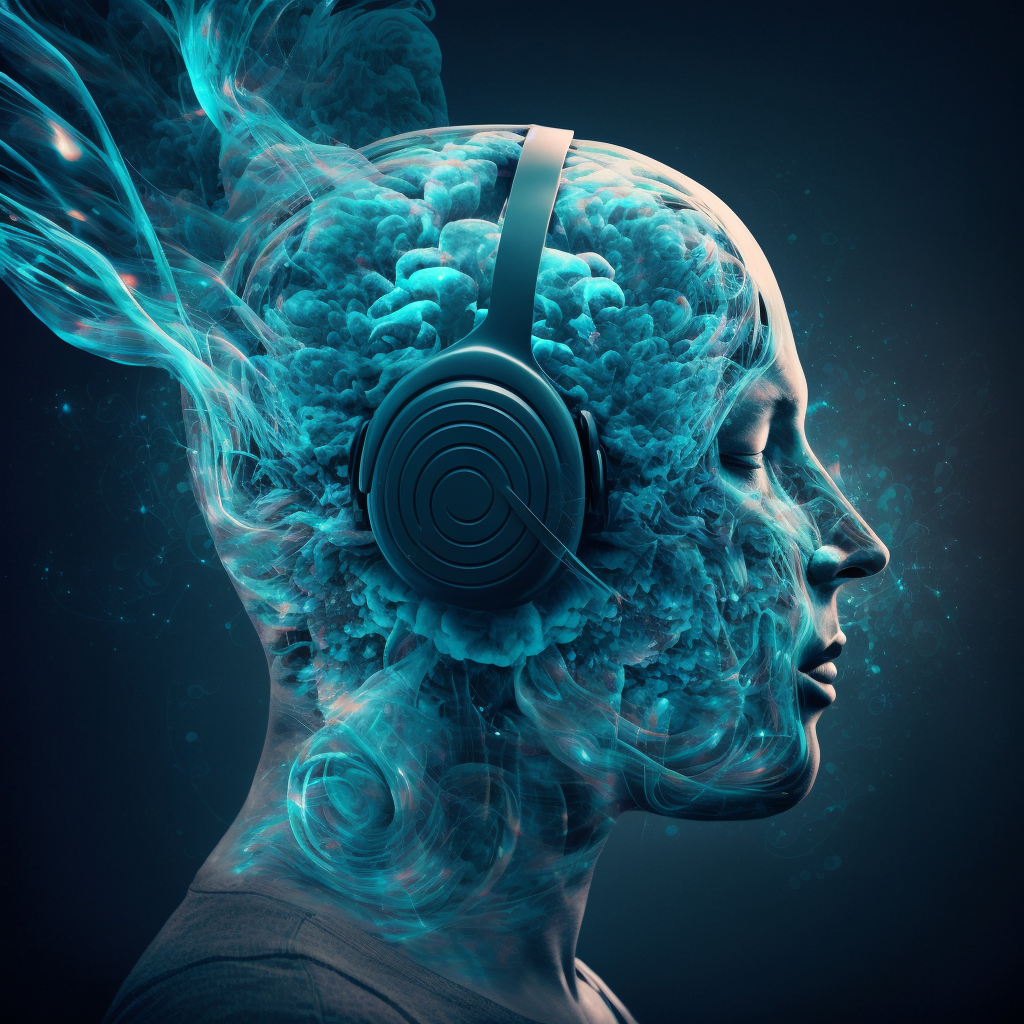Many have turned to innovative methods and technologies in the quest for improved mental well-being and enhanced cognitive function. One such phenomenon gaining traction is the world of binaural beats (BR). But what exactly are binaural beats, and how can they affect your brain and overall mental state?
Understanding Binaural Beats
Binaural beats are an auditory effect at its core when two sound waves of different frequencies are simultaneously applied to each ear. This unique aural experience creates an intriguing brain phenomenon known as binaural integration.

Imagine listening to audio with 120 Hz in your right ear and 130 Hz in your left ear. Remarkably, your brain processes this combination as if you are hearing sound waves with a frequency of 10 Hz. These frequencies correspond to different states of brain activity, and the brainwave states affected by binaural beats include:
- Delta (1–4 Hz): Associated with deep sleep.
- Theta (4–8 Hz): Corresponds to the transition between wakefulness and dozing.
- Alpha (8–13 Hz): Linked to a relaxed state and meditation.
- Beta (14–25 Hz): Reflects insomnia and heightened concentration.
- Gamma (above 30 Hz): Signifies maximum attention on a task.
In reality, not all neurons in the brain operate at the same frequency simultaneously. Different brain areas may exhibit varying dominant brainwave states. However, binaural beats can potentially entrain the brain to a specific frequency, affecting memory, attention, and stress levels.
Exploring the Effects of Binaural Beats
One of the most common applications of binaural beats is relaxation and sleep enhancement. According to a survey involving over 30,000 individuals, a significant portion (72%) used binaural beats for relaxation and improved sleep. While research in this area is limited, some experiments suggest that binaural beats can reduce hyperexcitability, making it easier to fall asleep.

Enhanced memory and attention are also potential benefits of binaural beats. Various studies have explored the impact of different frequency ranges on memory improvement. For example, alpha and theta rhythms have been associated with memory enhancement. In one study, participants who listened to beta waves (15 Hz) for five minutes demonstrated improved visual-spatial and verbal memory test performance.
Furthermore, binaural beats can aid in concentration and creativity. Experiments have shown that listening to binaural beats with frequencies above 30 Hz can increase the ability to maintain attention and encourage flexible and creative thinking.
Pain Reduction and Stress Relief
There is evidence to suggest that binaural beats may alleviate pain. In one study, participants with chronic pain experienced a 77% greater reduction in pain levels after listening to binaural beats with a frequency of 6 Hz compared to those who listened to audio without binaural beats.
Additionally, binaural beats have shown potential in reducing anxiety and stress. Experiments involving individuals with anxiety disorders revealed that a combination of music and binaural beats had a more significant impact on reducing anxiety levels than music alone.
Moreover, listening to binaural beats shortly before stressful events can alter stress reactions. In one study, participants exposed to binaural beats before a stressful task exhibited greater dominance of the autonomic nervous system’s parasympathetic “calm” part.
How to Explore Binaural Beats
If you’re intrigued by the potential benefits of binaural beats and wish to try them for yourself, there are several ways to access these audio compositions. You can find binaural beats tracks on popular platforms like Yandex Music or YouTube, categorized based on their intended effects:
- “Binaural Beats”: A playlist with BR tracks without accompanying music or noise.
- “Binaural Beats Brain Waves Isochronic Tones Brain Wave Entrainment”: A comprehensive playlist featuring rhythms combined with sounds like ocean waves, musical instruments, or noise.
- “Binaural Beats for Deep Sleep”: A playlist designed to promote relaxation and sleep with alpha rhythms for rest and meditation.
- “Focus Music, Binaural Beats Concentration Music for Studying, Super Intelligence”: Offers almost three hours of music with binaural beats for enhanced concentration.
- “Pure 40 HZ Binaural Beats”: Focuses on the frequency for improved focus, memory, and concentration.
- “Super Intelligence: 14 Hz Binaural Beats Beta Waves Music” Provides almost three hours of beta frequency beats on YouTube, ideal for concentration and mental agility.
Remember that to experience the effects of binaural beats fully; you should use headphones, allowing two different frequencies to flow into each ear simultaneously.
While binaural beats show promise in various aspects of mental well-being, individual experiences may vary. Consider incorporating them into your routine and monitor their effects to determine whether they benefit your unique needs. Whether you seek relaxation, improved memory, reduced pain, or enhanced focus, binaural beats offer an intriguing avenue to explore for potential mental enhancement.

